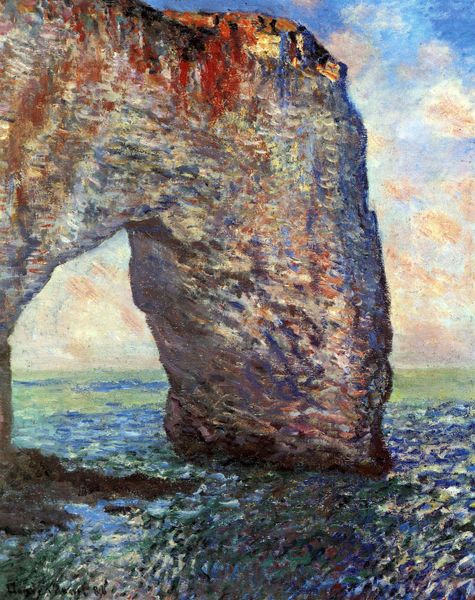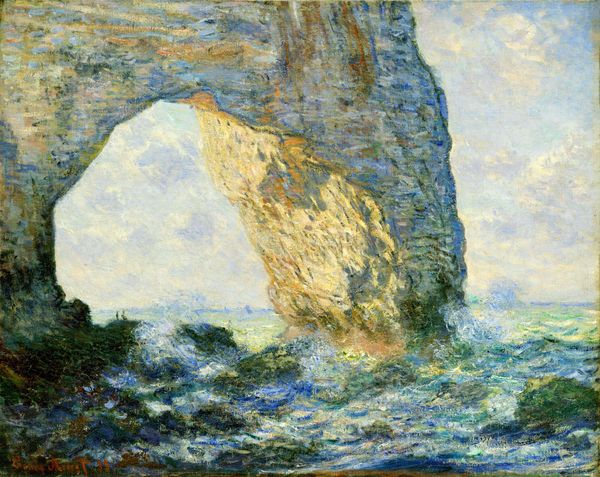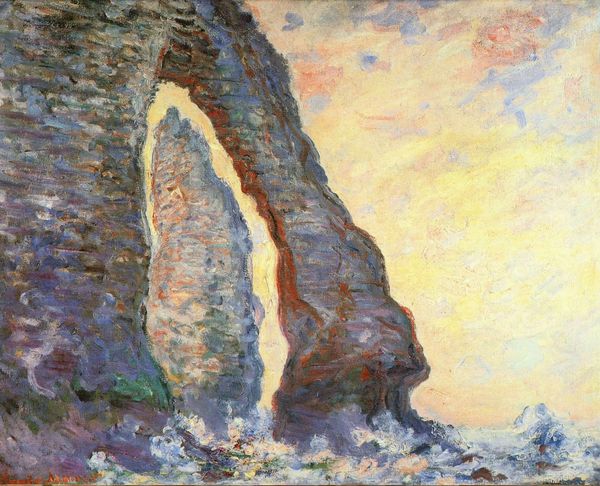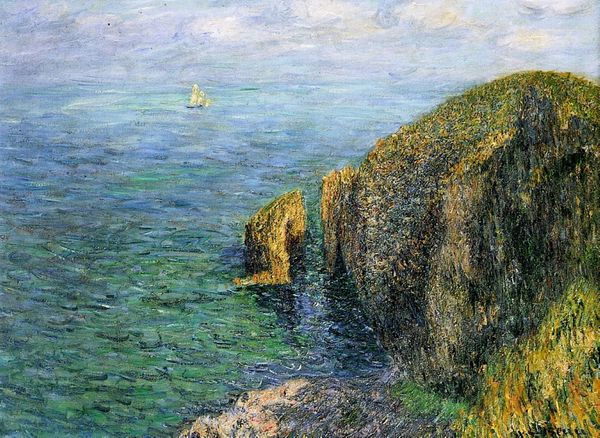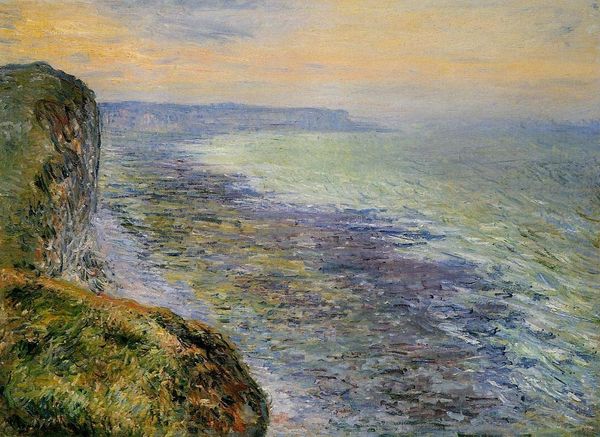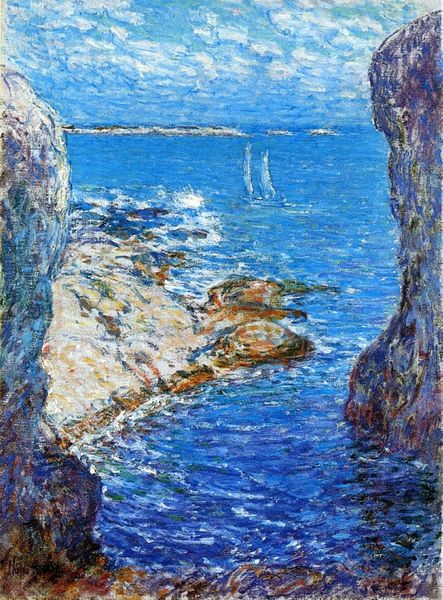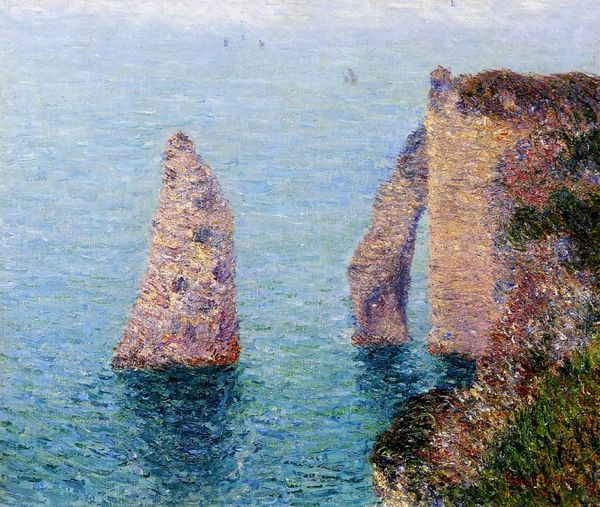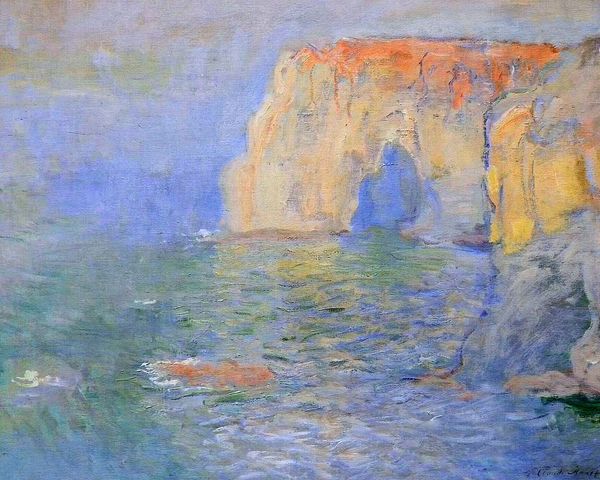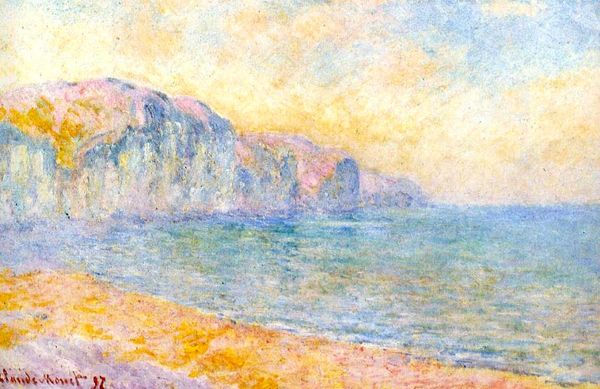
painting, plein-air, oil-paint, impasto
#
sky
#
cliff
#
painting
#
impressionism
#
impressionist painting style
#
plein-air
#
oil-paint
#
landscape
#
impressionist landscape
#
oil painting
#
impasto
#
rock
#
water
#
cityscape
#
sea
Copyright: Public domain
Curator: Before us, we have Claude Monet's "The Manneport at High Tide," painted in 1885. It’s an oil painting, created in plein-air, capturing a specific moment in time at the coastal rock formation in Étretat, Normandy. Editor: Immediately, the monumentality strikes me. The immense cliff face dominating the canvas feels both powerful and strangely… fragile. The texture is so alive, almost pulsating. Curator: That impasto technique definitely enhances that feeling of dynamism. The late 19th century saw artists increasingly freed from academic constraints, and Monet exemplifies this shift towards individual expression. His focus shifted to capturing the fleeting effects of light and atmosphere, influenced by advancements in color theory and the availability of new pigments. Editor: Light, indeed. Look at how the colors play across the rock face. It is an anchor. In the psyche, a powerful figure like that implies strength and protection. Consider also how, in many cultures, water represents both chaos and renewal, so this interplay speaks of constant transformation. Curator: The painting was created in the context of increasing industrialization. Coastal regions such as this were becoming increasingly popular tourist destinations and sites for artistic communities seeking inspiration outside traditional cityscapes. It can be argued that the painting immortalizes the cultural idea of a pristine nature threatened by this burgeoning modernity. Editor: Precisely. The arch, this natural portal, beckons, but it's a selective invitation. Think of archways in Roman art as signals of status and importance, and consider the cultural association between high places and the sublime. In that period, we were also learning about our earliest ancestors via archeology, which links back to primordial memory and how humanity's foundations are laid. Curator: These connections between geological formation, and symbolic cultural capital were not lost on contemporary critics, I’m sure. What resonates even now, for me, is Monet's revolutionary commitment to individual visual experience, despite external cultural and scientific pressures. Editor: The painting seems to speak of time, and the power of the elements, more than a fixed political position. As a depiction of primal landscapes, it reaches to an archetype of humanity that feels surprisingly current.
Comments
No comments
Be the first to comment and join the conversation on the ultimate creative platform.
